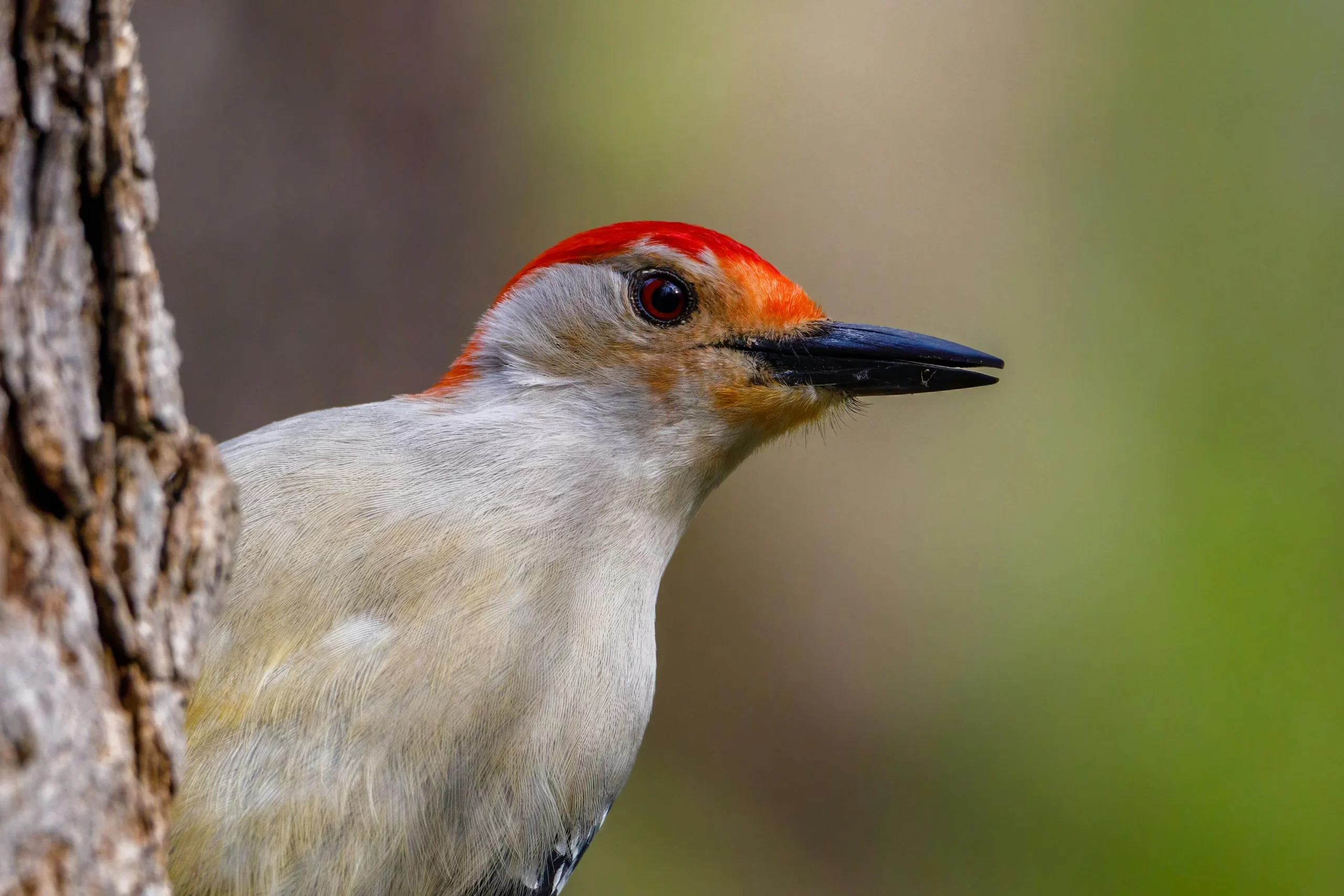Although Michigan supports a great diversity of birds such as finches and owls, the state is rather average concerning woodpeckers. While some articles claim that Michigan has 10 native woodpeckers, the reality is that only 8 species are expected in the state. Still, eight types of woodpeckers in Michigan are nothing to scoff at.
This guide is going to describe each of the 8 Michigan woodpeckers. I’ll tell you how to differentiate each species while also letting you know where the best places to look for these birds are. Without further ado, let’s learn about the woodpeckers of Michigan!
Table of Contents
8 Woodpeckers In Michigan
Black-backed Woodpecker
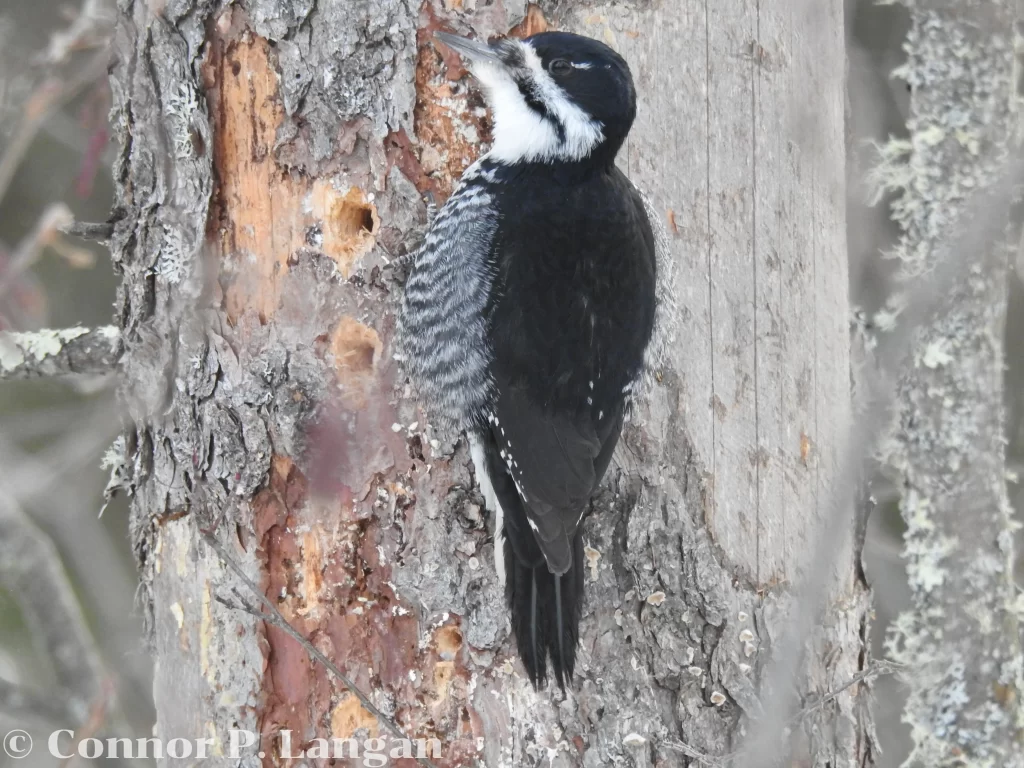
Identification
Black-backed Woodpeckers look similar to American Three-toed Woodpeckers – a species that occasionally wanders into Michigan. However, note that Black-backed Woodpeckers are very dark overall, having an entirely black back and lacking a white stripe behind their eyes. Males differ from females in that they have a yellow patch on their heads.
Habitat and Range
This Michigan woodpecker species won’t be found away from coniferous trees, but within this group of trees, they may be found in jack pine forests, spruce bogs, and occasionally clearcuts. They seek areas in which forests have recently experienced some sort of disturbance, as this leads to greater numbers of their beetle larvae prey.
Black-backed Woodpeckers are typically confined to the Upper Peninsula of Michigan, but they occasionally wander south following fires. For instance, the charred remains of trees from the Hughes Lake Forest Fire attracted several of these woodpeckers in Michigan.
Status
With scarcely more than 1,000 eBird observations, Black-backed Woodpeckers are Michigan’s rarest woodpeckers. They are naturally scarce birds, and the Upper Peninsula is birded far less frequently than other parts of Michigan.
Downy Woodpecker
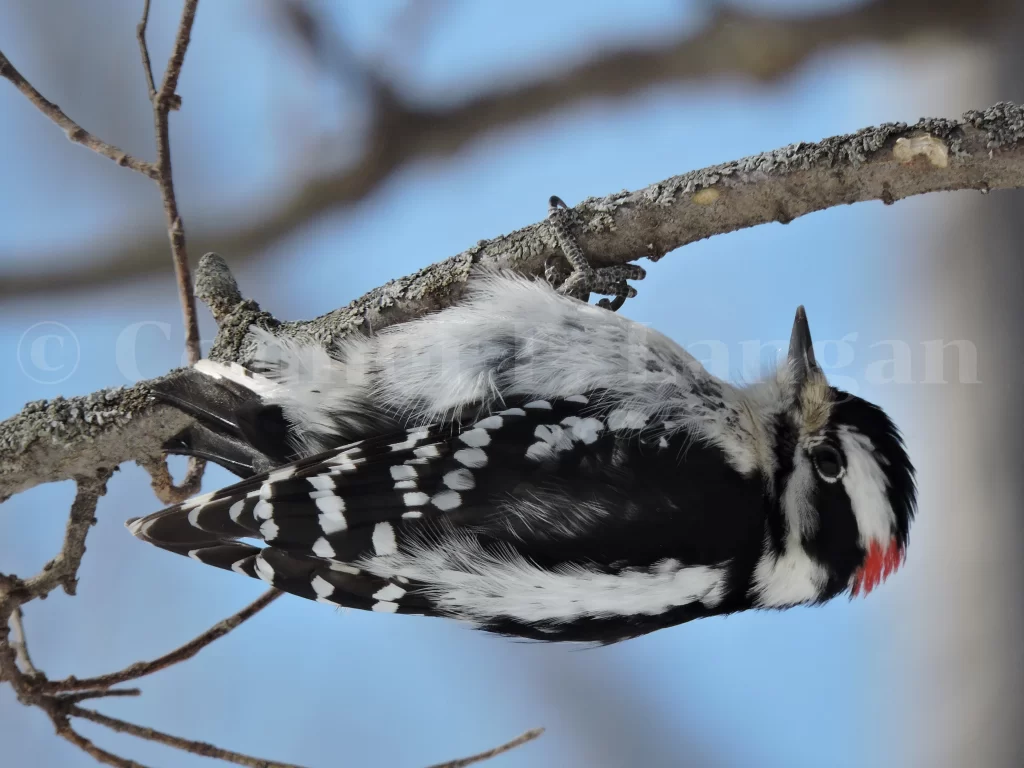
Identification
Downy Woodpeckers are small woodpeckers in Michigan with white, unmarked undersides and black and white backs. They’ve got a sizable white patch on their backs and short bills. The only difference between males and females is a tiny red patch on the back of a male’s head.
Habitat and Range
These woodpeckers of Michigan are very adaptable, as they thrive in most habitats with trees in Michigan. Downy Woodpecker populations tend to be less dense in massive forests, as other woodpecker species are better suited to survive in such places. However, no woodpecker in Michigan is more well-equipped to survive in backyards.
Downy Woodpeckers can be found throughout the entirety of Michigan, with minimal differences in population density throughout the state.
Status
With more than 645,000 eBird observations in Michigan, Downy Woodpeckers are the most common woodpecker in the state.
Hairy Woodpecker
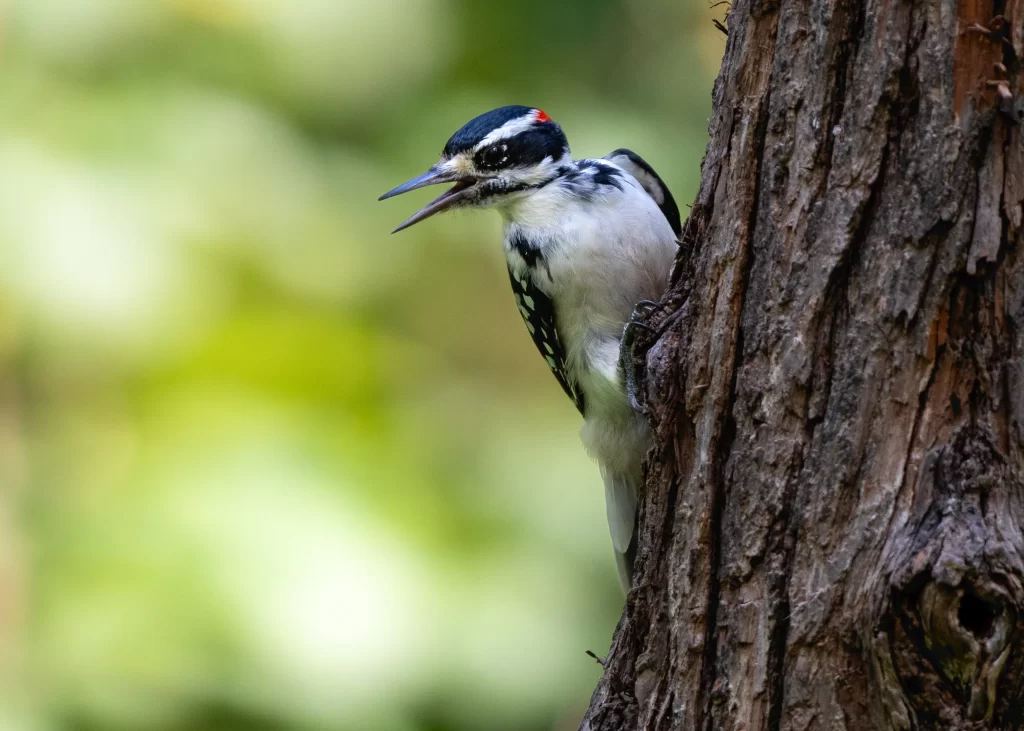
Identification
Hairy Woodpeckers look like oversized Downy Woodpeckers. Separating the two species can be challenging for beginning birders, but note the Hairy Woodpeckers have much larger bills and are generally quite a bit bigger.
Habitat and Range
Hairy Woodpeckers are not quite as adaptable as their Downy relatives. Still, they do perfectly well in parks, wooded suburban areas, and forests. Hairy Woodpeckers are common throughout Michigan, being readily found throughout the state.
Status
There have been 277,000 observations of this woodpecker of Michigan in the state, so they are plenty common.
Northern Flicker
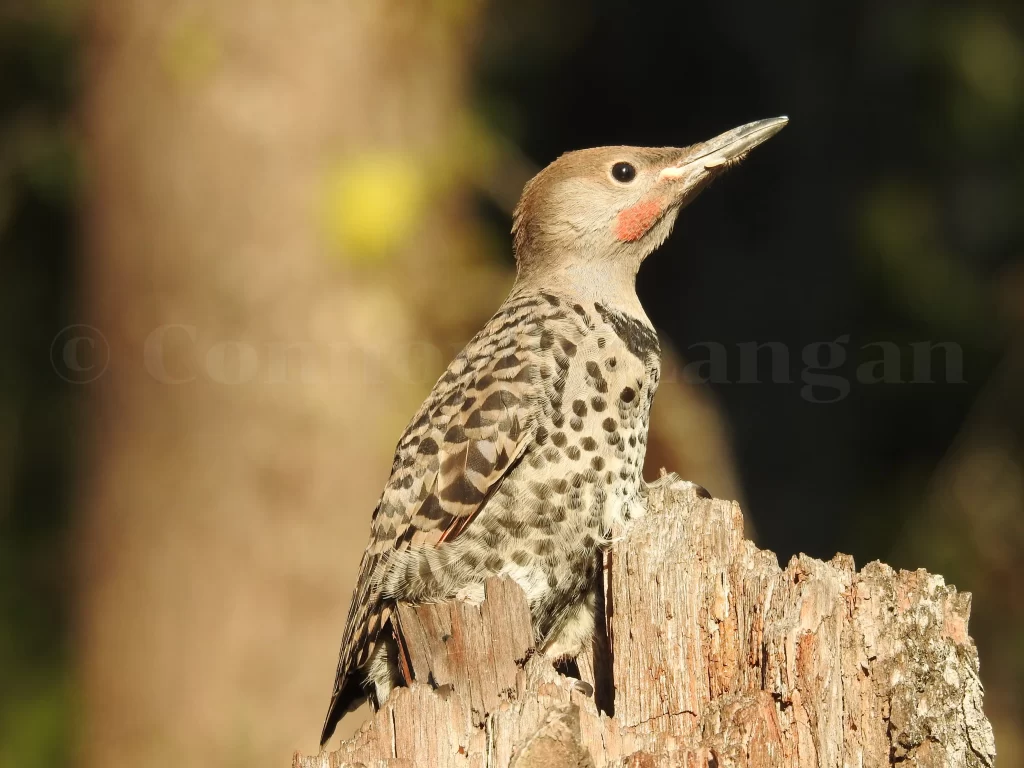
Identification
Northern Flickers are very distinct in Michigan with their brown, spotted undersides and streaked brown backs. Males have black moustaches and both sexes have red on the backs of their heads. They are the second largest woodpeckers in Michigan.
Habitat and Range
Northern Flickers seek different habitats than most other Michigan woodpeckers, as they’re often found at the edges of forests or open woodlands. They certainly do not thrive in areas with dense trees, and they prefer to exist in areas with numerous dead trees on which they can forage.
Northern Flickers are common throughout the entirety of Michigan.
Status
There have been more than 380,000 eBird observations of these woodpeckers of Michigan. Keep in mind that Northern Flickers leave much of the state during winter when they migrate to warmer climates.
Pileated Woodpecker
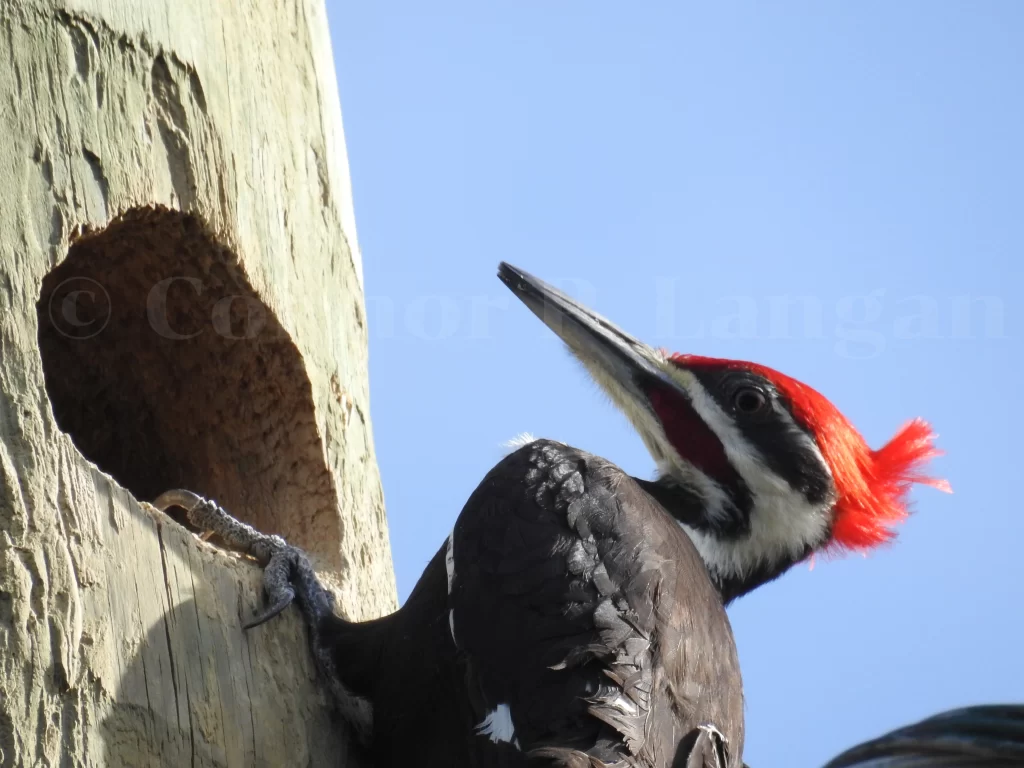
Identification
Pileated Woodpeckers are unmistakable Michigan woodpeckers thanks to their substantial size. Additionally, they’re the only woodpeckers in Michigan with a crest. They’ve got entirely black bodies and black and white necks. Their crests are red, and males have red moustaches while females have black.
Habitat and Range
Pileated Woodpeckers generally prefer large, contiguous tracts of mature forests. However, urban birds can adapt to living in wooded parks and suburbs.
This woodpecker in Michigan can be found throughout the entirety of the state, and they’re nonmigratory.
Status
Pileated Woodpeckers are doing well in Michigan, while 142,000 eBird observations. They are naturally less common than most other types of woodpeckers in Michigan due to their large size, but there is plenty of suitable habitat for these creatures here.
Red-bellied Woodpecker
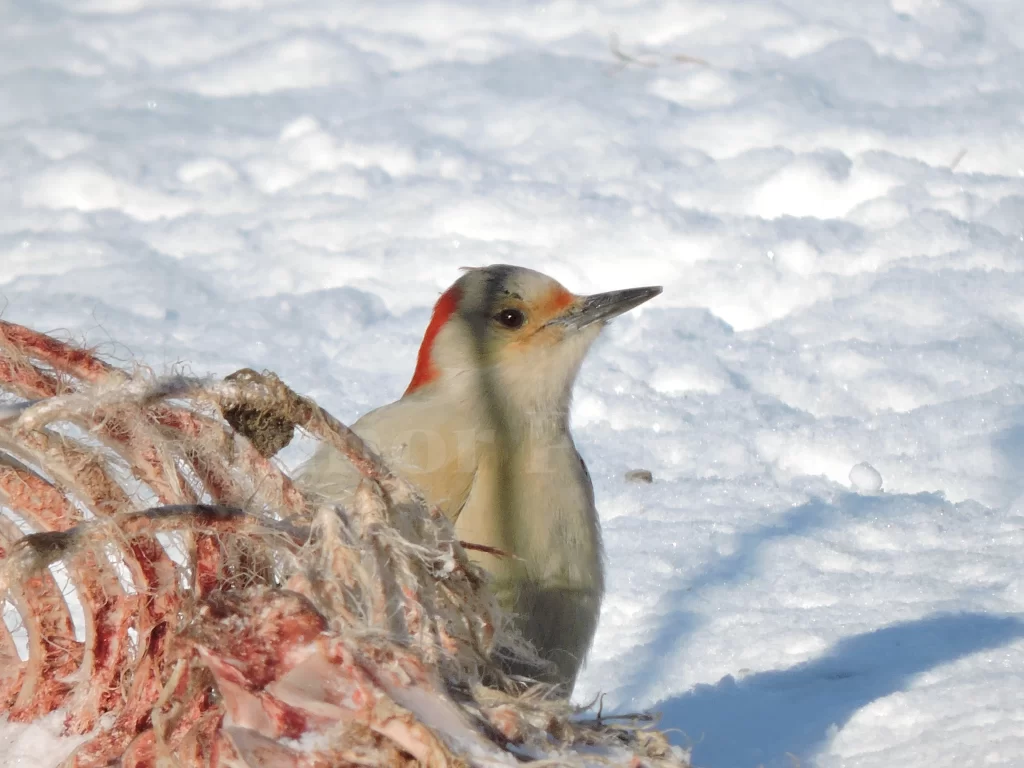
Identification
Red-bellied Woodpeckers don’t have the best names, as the red spots on their bellies are tiny and difficult to see. Both sexes have beige, unmarked undersides and black and white striped backs. Males have complete red hoods while females have partial red hoods.
Habitat and Range
Red-bellied Woodpeckers are not choosy, being found in a wide array of habitats that have trees in which they can forage and nest. They don’t excel in contiguous coniferous forests, but they thrive in most other forested areas.
This woodpecker of Michigan is abundant in lower Michigan, but they are scarce in the Upper Peninsula. However, they will likely expand their range here in the coming decades thanks to climate change and habitat alterations.
Status
More than 560,000 Red-bellied Woodpecker reports have been submitted to eBird. They’re often more common than the Downy Woodpecker in lower Michigan.
Red-headed Woodpecker
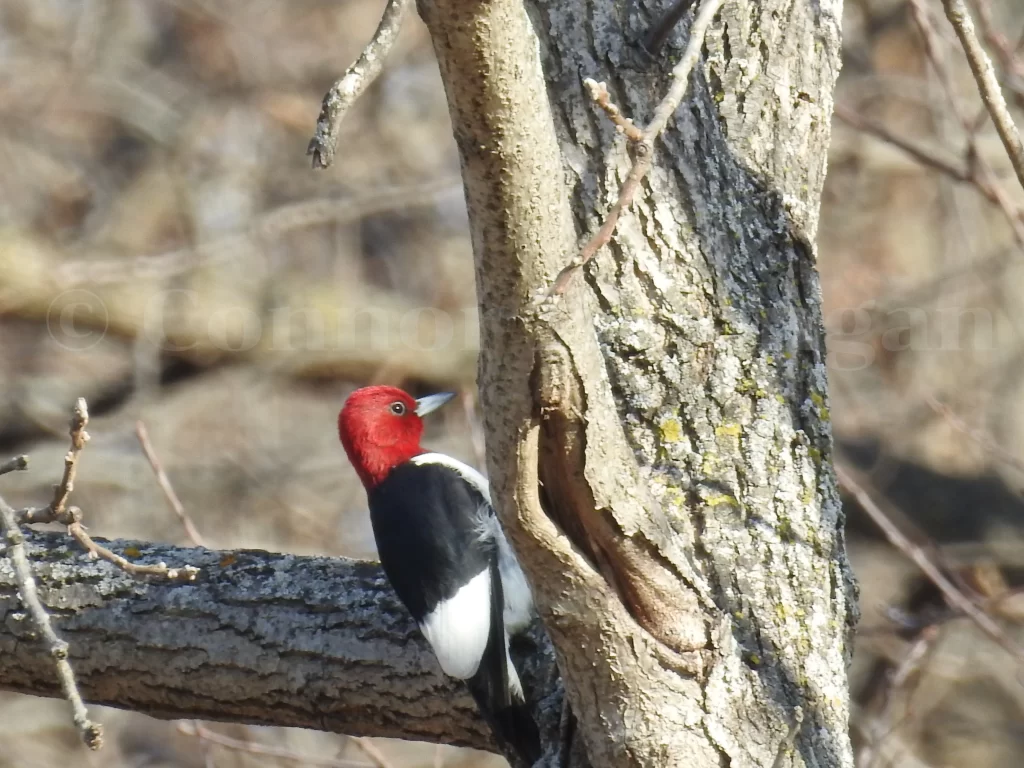
Identification
Red-headed Woodpeckers are very appropriately named, with both sexes having a bright red head. They’ve got black and white bodies and they’re the only sexually monomorphic woodpeckers in the state.
Habitat and Range
Look for these red woodpeckers in Michigan in open woodlands where they routinely sally out from branches to capture.
Like Red-bellied Woodpeckers, Red-headed Woodpeckers are increasingly less common as one travels further north in Michigan. They are localized and uncommon in the UP.
Status
There have been 42,000 Red-headed Woodpecker observations in Michigan, making them the most uncommon Michigan woodpecker after the Black-backed Woodpecker.
Yellow-bellied Sapsucker
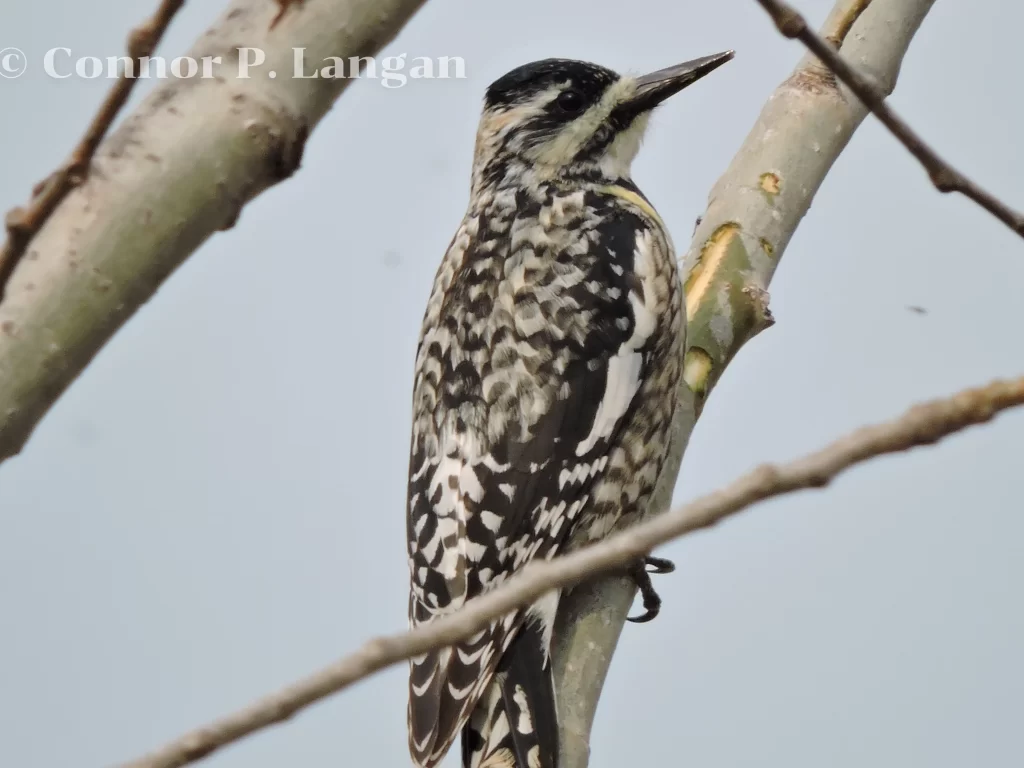
Identification
Yellow-bellied Sapsuckers have creamy undersides, black bibs, and black and white backs. Both sexes have red foreheads, and males have red throats.
Habitat and Range
These woodpeckers of Michigan seek young forests for foraging and breeding. They do not look for dead trees like other Michigan woodpeckers, as they instead drill sap wells into young trees and devour the insects drawn to these treats. This behavior does not kill trees, but it may scar them.
Yellow-bellied Sapsuckers can be found throughout the state during migration, but they only breed in the upper half of Michigan.
Status
There have been more than 53,000 Yellow-bellied Sapsucker observations in Michigan, making them rather uncommon.

